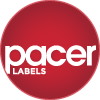Pacer Label uses and recommends Macintosh files for submitting artwork. Windows files are acceptable as long as the following software programs created them:
Artwork is considered “ready” when it can be used for prepress and printing without the need for modifications that might incur extra charges or cause delays. Too often, when the order reaches the point of production is it discovered that the artwork is not of a sufficient quality or type required to produce the products.
These setup instructions will help speed up the production of your project and give your printed piece the best results.
Pacer Label’s presses are set up for the SWOP Coated ICC Profile. Please use this profile when setting up your documents.
Adobe Creative Cloud users: You can synchronize your color profiles across all of the Creative Cloud applications in Adobe Bridge. Select “Color Settings” from the Edit menu and Select “North America Prepress 2” as your default color setting. This will apply the following settings across all of your installed Creative Cloud applications
(Cyan, Magenta, Yellow, Black). are industry standard printing colors. CMYK colors are different from RGB (Red, Green, Blue) which are used to display colors on your monitor or other digital device.
The number of colors that can be faithfully printed in the CMYK colorspace is less than what can be displayed on a monitor using the RGB colorspace. Any colors that fall outside of the CMYK color space will be reduced to the closest reproducible color, which can result in unexpected and unwanted color shifts to your artwork.

CMYK Colorspace

RGB Colorspace

CMYK (smaller) vs. RGB Colorspace
Pacer Labels recommends that images have a minimum resolution of 300 dpi at the final printing size.
We do not recommend using text smaller than 8pt. in photoshop unless your image resolution is at least 800dpi at the final printing size. For optimal results with text and images, create your artwork as a vector based image (postscript) in programs like Adobe Illustrator or Corel Draw.
Artwork should have 1/16″ ( 0.063″ or 1.6mm ) bleed extending past the trim line. This is to prevent minor cutting variations from leaving unintended results at the trim edge.
Artwork should have 1/16″ ( 0.063″ or 1.6mm ) “Safe Area” inside the trim line. Do not put critical information or images outside the Safe Area. This is to prevent minor cutting variations from leaving unintended results at the trim edge.
If you want printed borders, they must be placed a minimum of 1/16″ ( 0.063″ or 1.6mm ) inside the trim line and include bleed. This is to prevent minor cutting variations from leaving unintended results at the trim edge.
Please outline all fonts used in your document before sending your artwork. If we don’t have the font you have used, it may be automatically substituted for an alternative font.
If you require our prepress art department to modify your file(s), please send file(s) with all fonts intact and included along with your art files.
For acceptable legibility, text should be no smaller than 4 points.
Adobe Illustrator
Adobe InDesign
Protected by Security by CleanTalk

